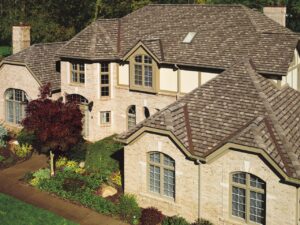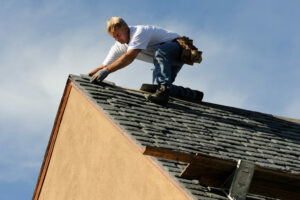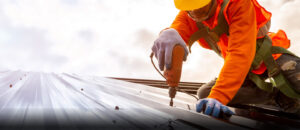Your roof is one of the hardest-working parts of your house. It defends against rain, snow, wind, heat, and cold.
There are 64 practical types of roofs in use. Often roofs need significant intervention such as the church medieval roof mentioned above which showed extensive rafter deflection requiring a lot of re-raftering. Contact Canton Roofing now!

Shingles are the most recognizable part of your roof. These decorative and sturdy shelters protect the plywood or vapor barrier beneath them from weather conditions like rain, wind and snow. They also improve your home’s curb appeal and give you more confidence in your living space.
Wooden shingles, for example, can add a classic touch to cottages, coastal homes and traditional houses. Each shingle has a unique color, shape and design to provide your house with a distinctive look that will stand out in any neighborhood. They’re also a good option for anyone who wants to preserve the natural beauty of their home, which can increase its value when it comes time to sell.
In recent years, shingle manufacturers have introduced composite or synthetic shingles that blend wood, slate and clay to create roofing materials with improved durability, strength, and resistance to weather elements. Although not as long-lasting as traditional shingles, these materials can still last for a lifetime.
A shingle’s protection is derived from the coating on its surface that reflects sunlight and keeps water off of your roof. Over time, the sun’s rays cause the coating on asphalt shingles to degrade. This is why shingles should be replaced when they’re worn out or no longer offer the level of protection you need.
The best way to extend the life of your shingle roof is to maintain proper ventilation, which includes balanced intake and exhaust and following Department of Energy recommendations for attic insulation. It’s also important to make sure you have a qualified contractor install your shingles. This is because improper exposure (the lateral distance between joints in successive courses, sometimes called stagger or edge-to-edge spacing), offset, and nail placement can lead to leaks and damage.
Leaks can occur wherever the shingle layer is penetrated, interrupted, or meets a wall. For this reason, it’s important to install flashing at these areas of your roof. Flashing is usually made of corrosion-resistant metal. If you’ve chosen closed valleys, this step is completed as shingle courses approach and run through the valleys.
Asphalt is one of the most common and versatile construction materials. It is used in road construction, roofing and paving. This is because of its waterproof and binding qualities. It is a black, tar-like, highly viscous cementitious material made of high molecular weight hydrocarbons.
Asphalts contain saturated and unsaturated aliphatic and aromatic compounds with up to 150 carbon atoms. They are found in crude petroleum and also extracted from coal or natural gas. These are then mixed with aggregates in an asphalt mixing plant to create the material that will be used for roads and other surfaces.
The material is heated to a specific temperature in order to adhere it to the aggregates and allow it to cure. This makes the pavement strong and durable. It can withstand heavy vehicle loads and resists rutting. Asphalt can be made into different grades depending on the application. For example, higher-grade asphalt can be used on airport runways and taxiways due to its ability to withstand the heavy load of aircraft tires. It is also popular for bicycle and pedestrian paths as it offers a smooth surface that is safe for walking or biking. It is even used as the preferred surface for racetracks because of its ability to handle high speeds and provide a gripping surface.
Because of its durability, constructability and ease of maintenance, asphalt is the favored paving material for city roadways. It can be built and repaired quickly, which allows for faster traffic flow and fewer delays. In addition, asphalt is low-cost and provides good value for money.
Another benefit of asphalt is its environmental sustainability. It can be recycled and used over again. It also helps to reduce air pollution since it is a good insulator and keeps heat out of buildings. It also absorbs rainwater and can help to control storm runoff. Additionally, it does not require much time to set up, which means that drivers can use newly paved roads and parking lots almost immediately after it has been put down.
Asphalt is also a popular choice for roofs, especially in colder regions. The mastic asphalt that is used for this purpose can be obtained from two sources – recycled asphalt shingles and scraps from the manufacturing of new shingle tabs or from the removal of existing shingles (known as tear-offs). The mastic asphalt that is used in roofing is usually treated with modern polymers to ensure it activates within the required temperature range and stays flexible under stress.
Flashing is a metal sheet or strips that are installed around vulnerable areas of a roof where different materials or roof components intersect. It safeguards against water penetration that can damage the underlying materials and cause leaks in walls, windows, doors and other openings. It is particularly useful in eliminating seams where a sloped wall meets a vertical surface, at the junction of two roof planes, or around protrusions such as chimneys, dormers, vent pipes and skylights.
There are many different types of flashing, each designed to meet a specific purpose and accommodate various roofing materials. The most common are step and valley flashing, which seal the joints where a shingle roof meets a vertical surface such as a chimney or dormer; counter flashing, which covers and protects the upper edge of a run of base flashing that is installed up a wall; and drip edge flashing, which helps to direct water away from the edges of shingles.
These flashings are installed over a layer of tar or other waterproof material, which is slid underneath a shingle course to help create an airtight seal in vulnerable areas. Because it is made from metal, flashing can be a durable and long-lasting part of the roofing system. However, it should be inspected regularly for signs of wear and tear that could compromise its protective function. In addition, if sections become loose or dislodged, they should be resealed promptly to prevent water intrusion.
While most flashings are metal, some may be made from other materials. These materials are typically selected based on their ability to resist corrosion and provide a long-lasting and weatherproof barrier. Flashings can be installed either in a single piece, or they can be installed like shingles, with one piece of flashing overlapping another. They can also be sealed to function as a continuous surface.
Other types of flashing include wall flashing, which is used to stop water from entering a wall through a vulnerable joint or to deflect water that has penetrated a wall back outside; cap flashing, which is placed above windows and doors to prevent leaks in these openings; sill flashing, which is installed under windows and doors to avoid moisture build-up in the wall; through-wall flashing, which spans the thickness of a wall to protect cables, supports and other features; and kickout flashing, which is found at the bottom of a wall or roof intersection to help direct water away from the structure.
Underlayment is an extra layer of protection for a roof, usually installed before the shingles are put in place. It prevents moisture from infiltrating the wood sheathing of a roof and creates an additional barrier against air and water. Without it, moisture can cause a variety of issues with your roof deck, including rot, mildew, mold and leaks.
There are several types of underlayment, though felt is the most commonly used. Felt underlayment is made from varying blends of cellulose (natural plant fibers), polyester and bitumen. It’s durable, easy to work with and fairly inexpensive. It can also withstand high winds, which is useful for wood shingle roofs. However, it tends to absorb water, which causes wrinkling and can telegraph through to the roofing material. This can lead to premature failure of the roof-covering product. Felt underlayment should be saturated with asphalt to increase its resistance to water absorption.
Non-bitumen synthetic underlayment is a popular alternative to felt underlayment. It’s a tough, waterproof material that can withstand high winds and heavy snow loads. It can also be fastened with metal or plastic caps, which are typically used in high-wind areas and for certain types of roof-covering products. Synthetic underlayment is also resistant to fungal growth and won’t wrinkle as much as felt underlayment. It’s available in a wide range of thicknesses, from 7.5 mil to 30 mil, and has an ASTM rating for its durability.
While the National Roofing Contractors Association (NRCA) recommends using underlayment, it’s not required for every steep-sloped roof. If your client chooses to skip the underlayment, they should make sure that the roof-covering manufacturer and local building codes and climate zones require it. In addition, the NRCA recommends that you check with a professional roofing contractor to ensure proper installation.
If you see underlayment installed incorrectly, your best course of action is to contact the homeowner and explain that improper installation can void their roof-covering warranty. Suppose you suspect a home was built without underlayment. In that case, you can use the NRCA’s roofing manuals and online resources to determine if the sheathing was a suitable building material for that region’s climate zone.






